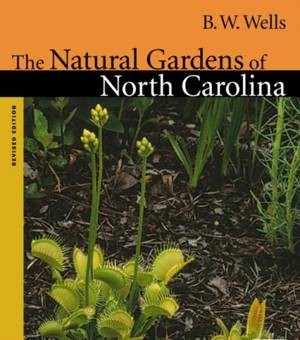
- Afhalen na 1 uur in een winkel met voorraad
- Gratis thuislevering in België vanaf € 30
- Ruim aanbod met 7 miljoen producten
- Afhalen na 1 uur in een winkel met voorraad
- Gratis thuislevering in België vanaf € 30
- Ruim aanbod met 7 miljoen producten
Zoeken
€ 52,95
+ 105 punten
Omschrijving
For seventy years, The Natural Gardens of North Carolina has been a must-read volume for anyone interested in wildflowers, native plants, ecology, or conservation in the state. This handsome revised edition features new line drawings and color photographs, an appendix that updates the botanical nomenclature, an introduction that focuses on B. W. Wells and his passion for the state's landscape, and an afterword that discusses the continuing relevance of Wells's ideas.
One of the first scientists to write and lecture about ecology, Wells introduced North Carolinians to the extraordinary tapestry of "natural gardens," or plant communities, within the state's borders back in 1932. His purpose was to help readers understand a plant within its community -- a pioneering concept at the time -- and to promote conservation. Moving from the Atlantic coast westward, Wells identifies eleven major natural gardens: the sand dune community, salt marsh, freshwater marsh, swamp forest, aquatic vegetation, evergreen shrub bog (or pocosin), grass-sedge bog (or savanna), sandhill, old-field community, upland forest, and high mountain spruce-fir forest. He devotes the first part of his book to a general account of the vegetation and habitats of each community and then identifies and describes the wildflowers found there.
One of the first scientists to write and lecture about ecology, Wells introduced North Carolinians to the extraordinary tapestry of "natural gardens," or plant communities, within the state's borders back in 1932. His purpose was to help readers understand a plant within its community -- a pioneering concept at the time -- and to promote conservation. Moving from the Atlantic coast westward, Wells identifies eleven major natural gardens: the sand dune community, salt marsh, freshwater marsh, swamp forest, aquatic vegetation, evergreen shrub bog (or pocosin), grass-sedge bog (or savanna), sandhill, old-field community, upland forest, and high mountain spruce-fir forest. He devotes the first part of his book to a general account of the vegetation and habitats of each community and then identifies and describes the wildflowers found there.
Specificaties
Betrokkenen
- Auteur(s):
- Illustrator(s):
- Uitgeverij:
Inhoud
- Aantal bladzijden:
- 290
- Taal:
- Engels
- Reeks:
Eigenschappen
- Productcode (EAN):
- 9780807849934
- Verschijningsdatum:
- 4/11/2002
- Uitvoering:
- Paperback
- Formaat:
- Trade paperback (VS)
- Afmetingen:
- 178 mm x 233 mm
- Gewicht:
- 503 g

Alleen bij Standaard Boekhandel
+ 105 punten op je klantenkaart van Standaard Boekhandel
Beoordelingen
We publiceren alleen reviews die voldoen aan de voorwaarden voor reviews. Bekijk onze voorwaarden voor reviews.








